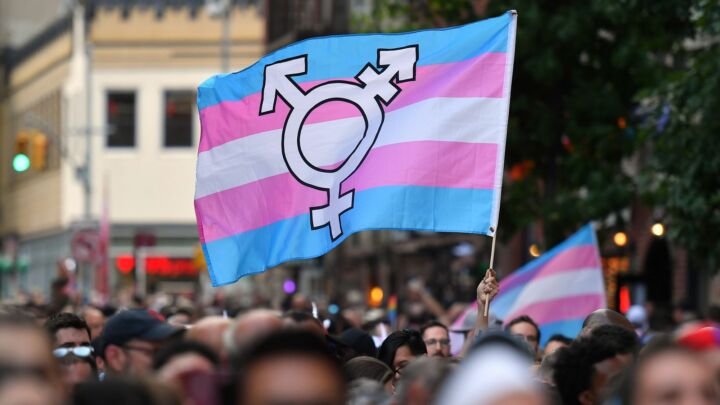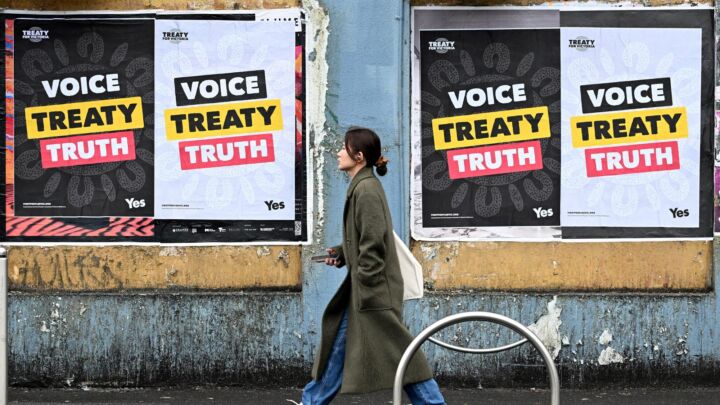Ferguson: this isn’t history repeating
The idea that US race relations are the same as they always were is ahistorical.

Much of the commentary on the unrest in Ferguson, Missouri has focused on the disturbing similarities and apparent continuities with the famous battles of the civil-rights movement in the Deep South half a century ago. Images of running battles with a heavily armed and belligerent police force conjured up memories of Commissioner Eugene ‘Bull’ Connor’s brutal and racist attacks on peaceful protesters in Birmingham, Alabama in 1963. Racial conflict in St Louis (Ferguson is a northern suburb of that city) dates back even further, to a violent race riot that broke out just weeks after US entry into the First World War. But is it true, as Landon Jones suggests in the Atlantic, that Michael Brown’s death ‘mirrored’ the 1917 riot, quoting William Faulkner to say that in thinking about American race relations, ‘The past is never dead. It’s not even past’? Or is LP Hartley’s literary reflection that ‘the past is a foreign country’ a more apt prism through which to view recent events in Ferguson?
St Louis’s racial past was explosive. Almost a century ago, African-American migrants began arriving in St Louis and other industrial towns and cities, seeking opportunities that were denied them in the rural South. Preparations for war had intensified labour demands, expanding industrial jobs at the same time that it stymied labour flows from Europe. In St Louis and especially neighbouring East St Louis just across the Mississippi river, black Southerners gained access to jobs in steel foundries, meatpacking factories and railroad yards. They also gained access to the vote and other citizenship rights. However, amid increasing labour unrest and union radicalism, city employers used black workers as strike breakers, union leaders scapegoated blacks for their organising failures, and Democratic politicians accused black – largely Republican – voters of perpetrating electoral fraud.
As tensions mounted, it became clear that both local police and the National Guard were willing to overlook violence against African Americans, allowing for racial division to ease mounting class tension, and a bloody riot broke out. A white mob ransacked and massacred the black community in East St Louis in July 1917, burning homes and killing men, women and children indiscriminately. Official figures count 39 black and nine white dead, but other estimates count upwards of 100 African-American deaths. It was one of the deadliest race riots in US history, its dramatic horror highlighted by the purposeful pen of WEB Dubois:
‘So hell flamed in East St Louis! The white men drove even black union men out of their unions and when the black men, beaten by night and assaulted, flew to arms and shot back at the marauders, five thousand rioters arose and surged like a crested stormwave, from noonday until midnight; they killed and beat and murdered; they dashed out the brains of children and stripped off the clothes of women; they drove victims into the flames and hanged the helpless to the lighting poles. Fathers were killed before the faces of mothers; children were burned; heads were cut off with axes; pregnant women crawled and spawned in dark, wet fields; thieves went through houses and firebrands followed; bodies were thrown from bridges; and rocks and bricks flew through the air.’
The inhuman scale of the East St Louis massacre was not replicated in Ferguson this week, but there have been many suggestions that the shooting death of Michael Brown was an echo of racist policing familiar in the history of that city. Was police officer Darren Wilson destined to pull that trigger, conditioned by centuries of official treatment of black lives as second-class, unworthy of the staples of citizenship such as due process? What, if anything, can be learned from the history of racial violence in the city?
The most striking continuity is that the St Louis metropolitan area encompassing both Ferguson and East St Louis remains among the most racially segregated places in the US. Nationwide, segregation indexes have declined slowly from a high in the 1960s, but in rust-belt cities like St Louis, the decline has been slowest. Suburbs like Ferguson repeat the pattern of white-flight that began in the inner cities, creating a majority black population with a residual white local council and power structure. Just as in East St Louis in 1917, African Americans have a poor relationship with the Ferguson police force – there are only three black police officers out of 53 – and there have been many claims of heavyhanded policing of the black community. Another interesting echo of the past is in the reaction to events: following the East St Louis massacre, a 10,000-strong protest march took place in New York City and following the Ferguson riots, thousands of protesters clogged Times Square to protest against racist policing.
However, these similarities disguise the many shifts in racial thinking, official policy and cultural attitudes that have occurred over the course of the twentieth century and especially since the 1960s. Even the St Louis context itself has changed drastically: from a dynamic, burgeoning industrial city to a decaying, rust-belt city with climbing levels of poverty, particularly in suburbs like Ferguson. Most of this decline has occurred since the Sixties but much of it has taken place in the last generation and has hit poor families hardest, especially poor, black, single-parent families like Michael Brown’s. These families continue to strive to make their lives better – Michael Brown’s mother struggled hard to get him through school but admitted the difficulties young black men faced graduating and going to college in present-day St Louis. African Americans in 1917 faced greater racial barriers and animosity, but they also had more optimism and more faith in their nation’s founding promises to offer freedom and democracy for all.
Unrest in Ferguson has demonstrated how far crowd-control policing has become militarised: the combat uniforms, automatic weapons, arrest of journalists, and the use of tear gas and rubber bullets make LAPD’s Daryl Gates look like a pussycat. Yet the ongoing militarisation of policing is part of a broader post-9/11 trend that does not have a racial profile. As Dr Martin A Berger, professor at the University of California, Santa Cruz, notes: ‘When we look at images of Ferguson and claim that they “look just like Birmingham, or Watts”, we plug into powerful national narratives on race that see police brutality as the problem facing people of colour in the US today. Police abuse of power is horribly corrosive to civil society, but it’s essential that we connect such violence to the broader social problems that all Americans share.’
In Ferguson, as authorities realised how these policing tactics played out vis-à-vis the nation’s racial history, they toned down their approach. Locally born black highway patrol captain Ronald Johnson arrived to smooth things over. Johnson listened to the community’s concerns and even marched with protesters, recognising their anger over police wrongdoings. Johnson’s softly-softly approach joined military-style policing in an ultimately clumsy two-pronged attempt at re-establishing order. Yet despite the curfews and the racial tokenism, this is still a far cry from the policy of officers and patrolmen who helped the mob to kill blacks in 1917. Moreover, while President Wilson, tooling up for a war, ignored the slaughter of American citizens on the streets of East St Louis, President Obama responded with a call that justice be done in the ‘heartbreaking’ circumstances of Michael Brown’s death. Federal intervention in Ferguson has been considerable: the Department of Justice has ordered an independent autopsy of Brown’s body as well as an investigation into the shooting, and FBI agents have been deployed to the area.
Improvements in cultural attitudes about race and greater national recognition of the need for racial justice did not come easily. African Americans fought for such improvements tirelessly; in 1917, the New York protest march was organised by the National Association for the Advancement of Colored People. Founder WEB Dubois recognised the need for organised self-defence, stating that: ‘When the armed lynchers gather, we too must gather armed. When the mob moves, we propose to meet it with bricks and clubs and guns.’ But Dubois thought that African Americans should fight to gain their rightful place as equal citizens under the constitution. Today, this aim has been formally achieved in law, but the goal of full racial assimilation that underpinned Dubois’ politics has been set aside. Americans of all skin colours have populated the protests in New York and elsewhere this week, indicating broad social support for racial justice but belying the nation’s continued racial segregation.
Cultural attitudes have changed to the extent that ‘race’ as a biological entity is no longer widely held to exist. However, black and white Americans still live largely separate lives, respecting one another’s separate ‘cultures’. This is the paradoxical quality of history that repeats itself but with a vastly altered meaning. The dream of an integrated multiracial democracy no longer exists in a nation fragmented by racial identities. In fact, that dream started to die soon after the East St Louis race riot, and in Ferguson it is now largely dead. Disillusionment about the possibility of progressive social change set in following the barbarism of the First World War and the many urban race riots that followed hard upon it. The assimilationist ideal that had animated American political culture came to appear hollow and was rejected from both ends of the political spectrum and from both sides of the racial divide. Besides a brief resurgence of optimism in the Sixties, racial identities increasingly hardened throughout the twentieth century.
Today, racial segregation continues in St Louis, not because blacks are barred from majority-white suburbs on the basis of ‘race’ – as they used to be through legal sanctions and restrictive covenants – but because they are disproportionately poor. The continuation of racial segregation is an outcome of continued disparities in wealth and income. The concentration of African Americans among the poorest is a historical legacy, for sure, but it is one that is rarely tackled due to adherence to racial, or more properly, cultural identities as a way of ordering the social world. Moreover, because difference is celebrated and culture is particular, those who seek equality find it difficult to appeal to any common, universal standard of citizenship.
The tragedy of Michael Brown’s death is undeniable. The killing of an unarmed man by a police officer has understandably aroused anger and outrage. But to imagine that nothing has changed in American race relations since the Sixties or in St Louis since 1917 is to condemn the nation to more of the same. Most crucially, the contemporary commitment to group rights has eroded the vigilance necessary for protecting individual citizenship rights. The constitutional Bill of Rights delineating the individual rights and freedoms (such as due process) necessary to protect against overreaches of state power are more crucial to ensuring that the Ferguson tragedy is not repeated than, for instance, a larger African-American presence on the police force. Michael Brown may not be just another Emmett Till, but if Americans want to make sure there are no more Michael Browns, there needs to be a real attempt to overcome the racial fragmentation and identity politics that make strangers out of fellow citizens.
Cheryl Hudson is a researcher in US history.
To enquire about republishing spiked’s content, a right to reply or to request a correction, please contact the managing editor, Viv Regan.








Comments
Want to join the conversation?
Only spiked supporters and patrons, who donate regularly to us, can comment on our articles.